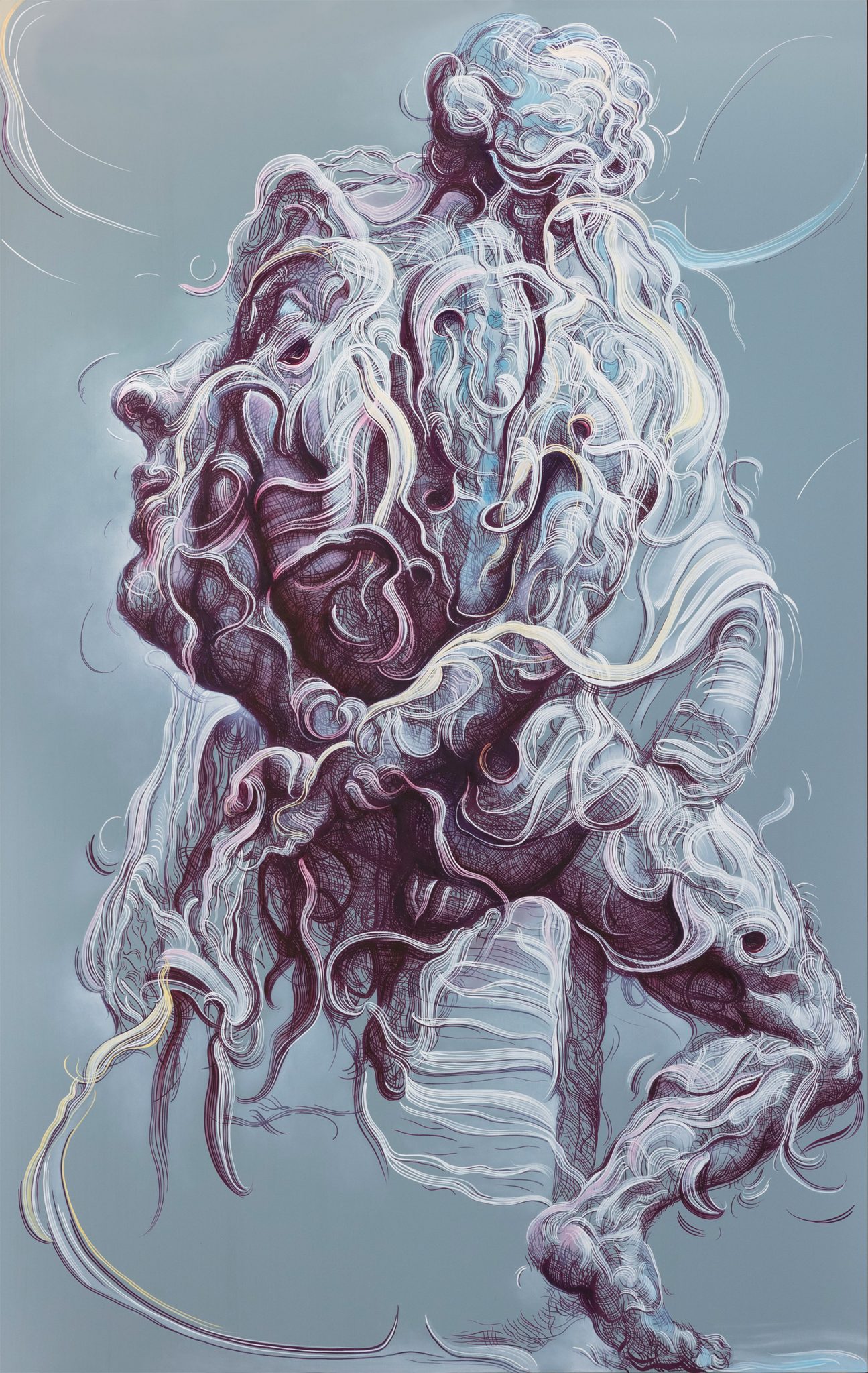

Just as Roy Lichtenstein satirised the painters out of whose shadow he emerged with his Brushstroke paintings, which flatten and simplify the loaded gesture of the tortured abstract artist, Brown removes the textural evidence of the means of production, but retains its visual impact.

Indeed, Clement Greenberg’s famous criticism of realism, that it is “using art to conceal art” could be judiciously applied to Glenn Brown’s painting (Clement Greenberg, ‘Modernist Painting’, 1961, reproduced in: Richard Kostelanetz, Ed., Esthetics Contemporary, Buffalo 1978, p. The illusion of the Dionysian ecstasy that consumed the American Abstract Expressionists, the preposterous idea that these were men thoughtlessly hurling the contents of their soul onto the canvas, is lampooned by Brown, who will spend hours creating a precise, flattened simulacrum of this ‘moment’ of inspiration. Although there are definite appropriative strains in Brown’s work, the process of creation and alteration is instrumental to the conceptual rigour of the paintings. These manipulations, forceful insertions of the artist’s hand into what would otherwise be an exercise in transposition, are pivotal to Glenn Brown’s practice, and are what distinguishes him conceptually from artists such as Richard Prince and Sherrie Levine.
.jpg)
Although he meticulously renders the brushstrokes visible in his manipulated base image, he also “inserts impasto brush marks where none had previously existed… bright highlights… thin glazes of translucent, tinted varnishes to include a feeling of depth” (Michael Stubbs, ‘Glenn Brown: No Visible Means of Support’, in: ibid., p.103). Indeed, the liberties that Brown takes with his source material do not cease when he picks up his brush. However, in Brown’s eyes, “the departure from the ‘original’ occurs the moment I have the notion to paint the painting and only stops when it is finished” (Glenn Brown in conversation with Laurence Sillars, in: Exh. The resultant image is projected or otherwise transferred on the surface to be painted, and provides a framework that limits what can happen next, beyond a faithful transference of colour and form. Colours are altered, formations cropped and stretched, compositions mirrored and flipped - the work is made to bend to Brown’s will. Uploaded and manipulated on Photoshop, the image undergoes a metamorphosis of distortion and inversion.

This image is most commonly a painting by a canonical artist, often by an expressionist such as Willem de Kooning, Karel Appel or Frank Auerbach. At the heart of all of Glenn Brown’s paintings is an image.


 0 kommentar(er)
0 kommentar(er)
